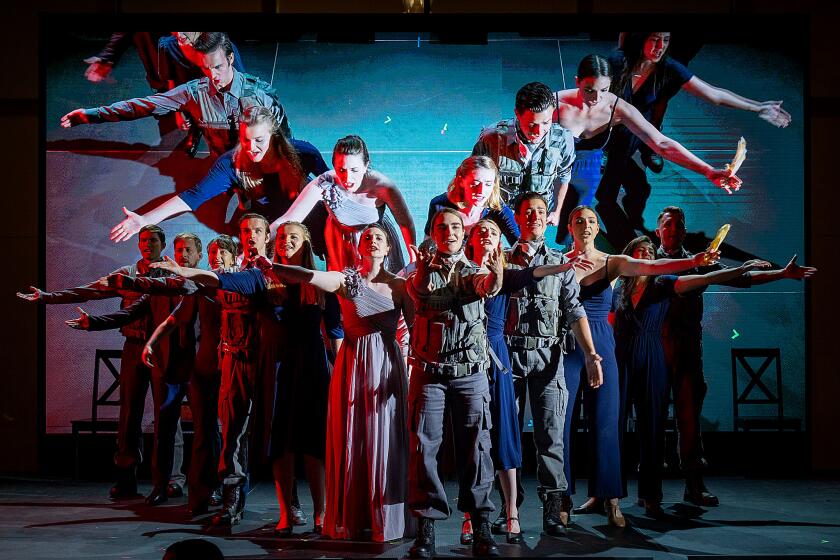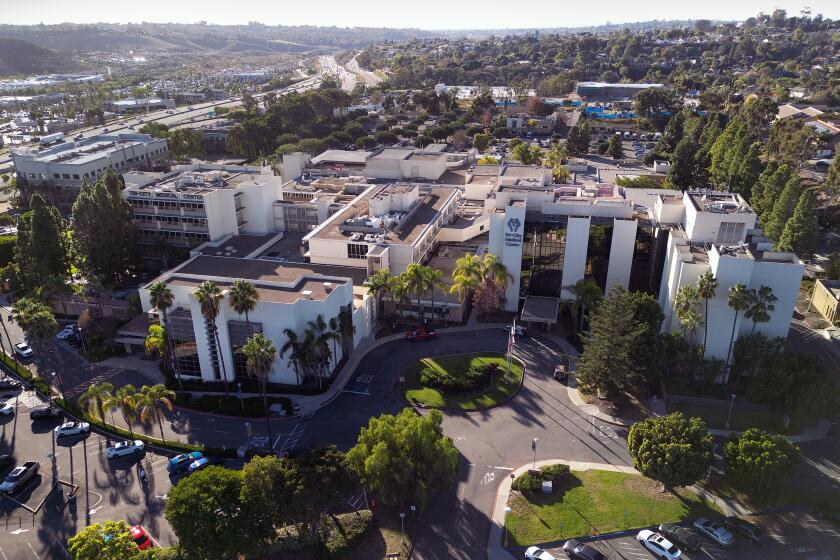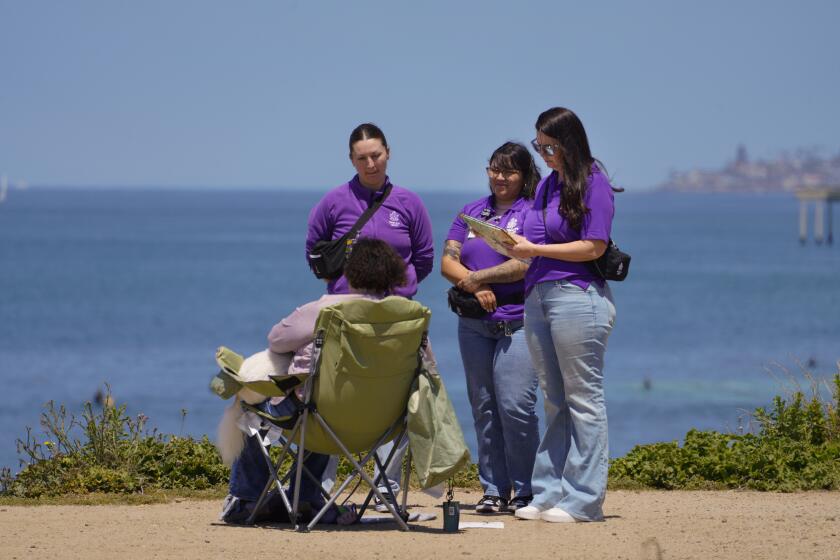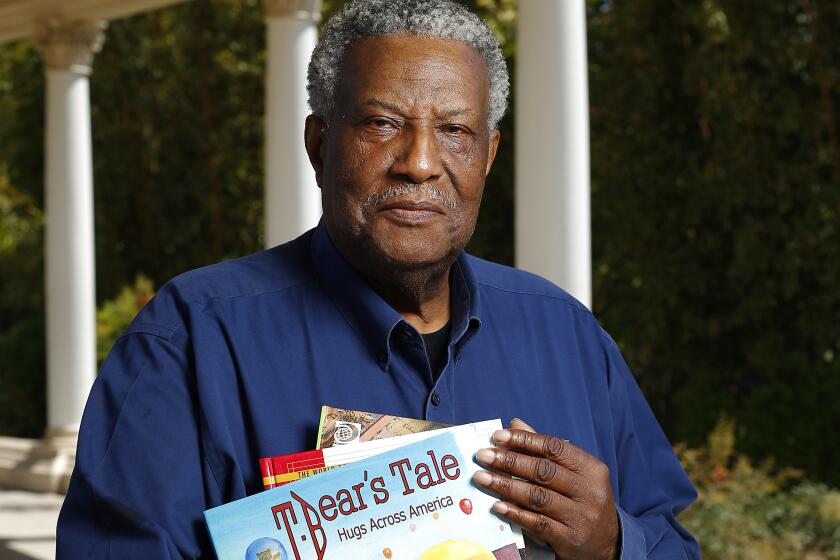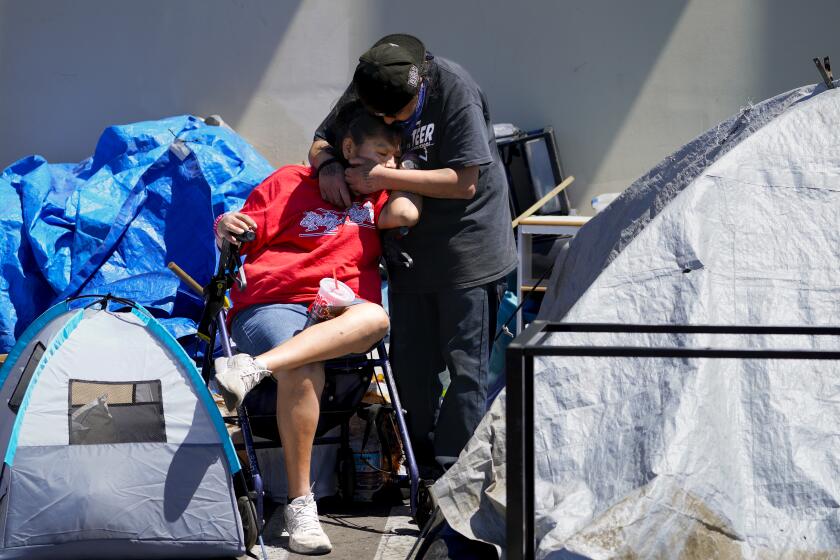Skydiver Jason Sanders swoops into the record book at global championships
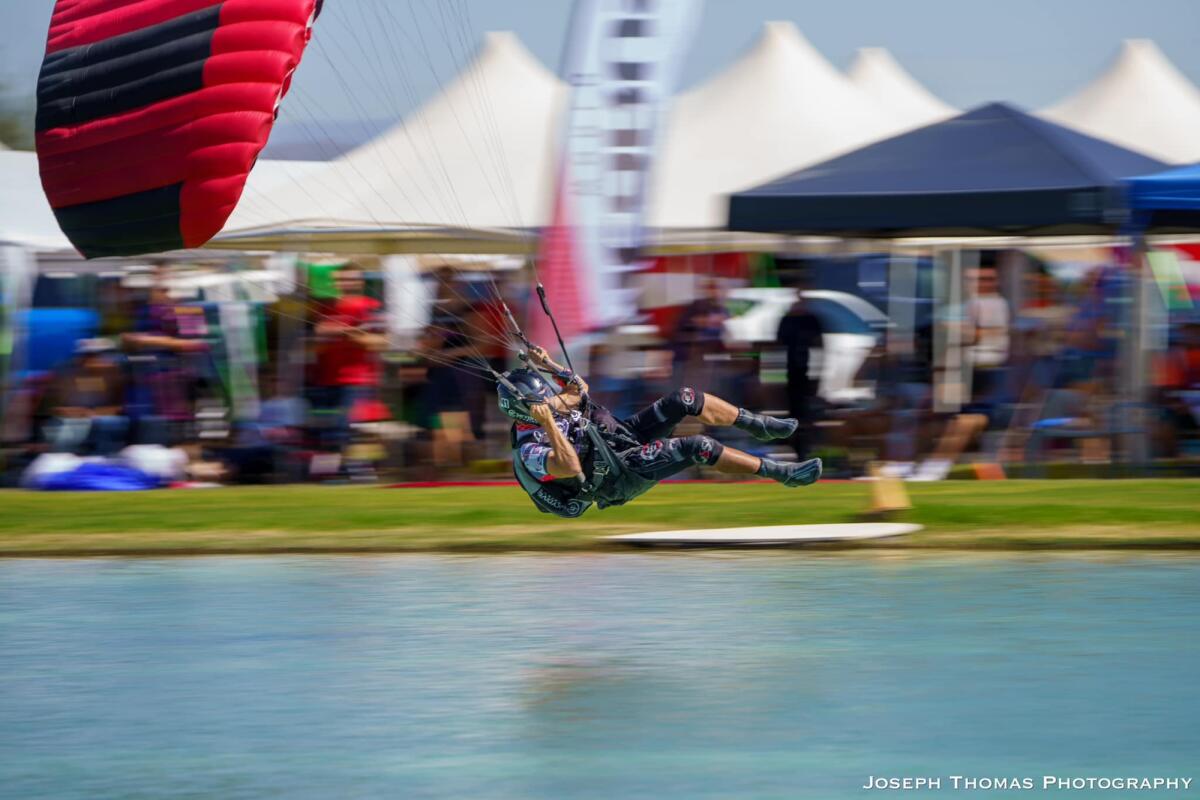
Sixteen years after competing for the first time as a canopy pilot, local skydiver Jason Sanders has swooped his way into a new world record and picked up two international gold medals in the sport.
It’s been a long road to glory for the 45-year-old Bonsall resident, who fell in love with skydiving after he first jumped out of an airplane nearly half a lifetime ago in Detroit. Sanders credits skydiving with saving his life in his early 20s and helping him find peace, balance and happiness following a personal tragedy in his early 20s.
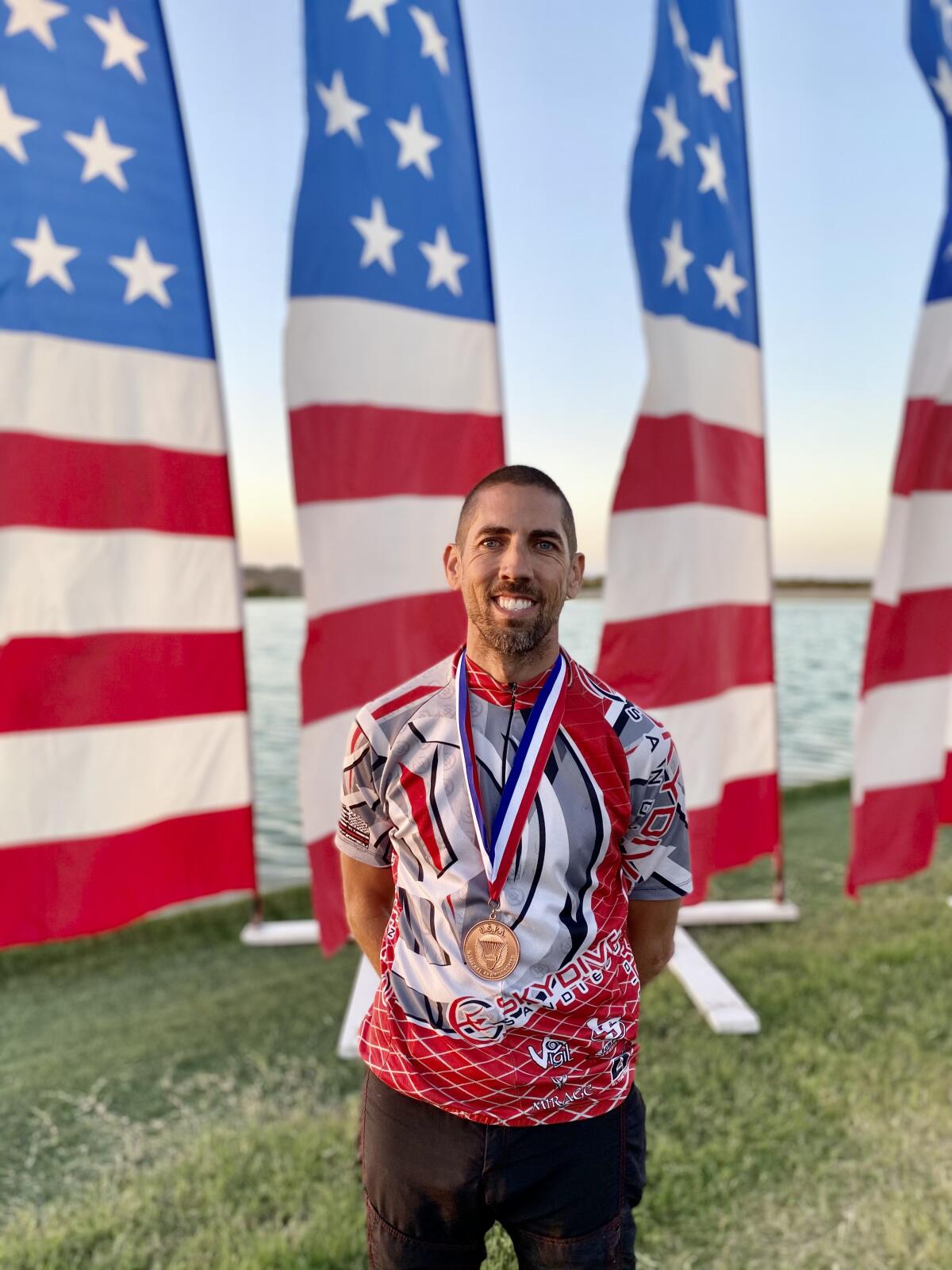
“When you’re in the air, you’re not thinking about anything else,” he said. “Whatever problems you’re dealing with that might be causing stress just disappear. You’re just enjoying being in the moment.”
At the World Parachuting Championships in Arizona on Oct. 13 and 14, Sanders finished first in the world in both the canopy piloting speed and accuracy competitions, but out of medal contention in the third category of canopy piloting distance. However, the distance Sanders traveled during the first of his three competition runs, 201.57 meters, was far enough to set the new world distance record for canopy piloting.
“My goal now is to continue to do my training and best to erase the mistakes,” he said. “We have the next world championship in South Africa in 2024. My goal is to win it all at that event.”
Canopy piloting, also known as “swooping,” is a competitive sport focused entirely on the final seconds of the pilot’s descent. As the pilots approach the landing zone, usually a shallow pond with a dirt or grass landing strip at the end, they turn into a face-down dive to build up vertical speed. Before impacting the ground, the pilots swoop out of the turn just in time to pass through five low height gates and dip a toe in the water before landing on the strip.
The top competitors in swooping reach vertical speeds of 100 mph and horizontal speeds of 90 mph. But Sanders is one of the fastest swoopers in the world, achieving average top speeds of 119 vertical mph and 105 mph horizontal. Canopy piloting is exceptionally dangerous. He said he has lost several friends to the sport over the years. But so far, except for a severe wrist injury 10 years ago, Sanders said he has survived with only bruising from hitting the water or ground too hard. He credits his success to years of training and careful planning.
“You’re trying to get as much vertical speed as possible and then finish the turn and take as much of that speed generated forward across the water or ground as efficiently as possible. That takes thousands of jumps and years of experience to do safely and to do it well,” he said.
Sanders grew up in South Carolina. He was 21 years old and working as a union welder and pipefitter in 1999 when his girlfriend died in a car accident. The next few years were a blur as he traveled around the country trying to find meaning in life and finally making his first skydiving jump at age 24.
“I was in a bad depressed state for many years. I turned away from God, was suicidal, had no path, no drive for life. I wanted to die every day,” he said. “But I couldn’t do that and wouldn’t do that my family. It was a very torturous time for me.
“When I started skydiving, it opened my eyes a little bit and showed me there are things in life to still live for and happiness to be had. So it turned everything around for me mentally. It gave me purpose and drive and brought happiness and peace to my life. It took many years to let go and accept God and renew my faith. But that’s why I say skydiving saved my life,” he said.
His first parachute jumps back in 2001 were vertical-drop free-flying, but within a year he discovered canopy piloting. In 2006, he entered his first canopy piloting regional competition and in 2012, he competed in his first national tournament. Not long after that he set an audacious goal to break world records, win a world championship and become No. 1 in the world. Ten years later, he has achieved one of his three goals and hopes to achieve the others in the next couple of years.
“I’ve known the skill was there and I’ve known my abilities to do that and to win, but I was never able to follow through. I think these past few years I’ve really focused on it and put more time and effort into training, eliminating mistakes and setting really good goals for myself.”
One of the biggest challenges for Sanders is finding the training time and equipment he needs to compete at the world level.
He supports his sports goals by doing construction jobs and working at Skydive San Diego at Otay Lakes in South County. The overall champion at the World Parachuting Championships in October was Sven Jseppi of Canada. Jseppi and some other international competitors have equipment sponsors who provide the pilots with experimental harnesses that can help the pilots build and maintain speed during their swoop and landing. Sanders built his own harness in his garage in July and he hopes this new equipment will help increase his competitiveness at future championships.
The next World Parachuting Championships will take place in South Africa in 2024. The competition will take place at an elevation of 5,000 feet, where increased air density can increase travel speed and distance. Sanders said those conditions could work in his favor. But whether he wins or loses, he said he knows he’s on the right path.
“Flying parachutes and being in the air is all I aspire to, besides my devotion to God and spreading his word,” he said.
Top headlines by email, weekday mornings
Get top headlines from the Union-Tribune in your inbox weekday mornings, including top news, local, sports, business, entertainment and opinion.
You may occasionally receive promotional content from the San Diego Union-Tribune.



